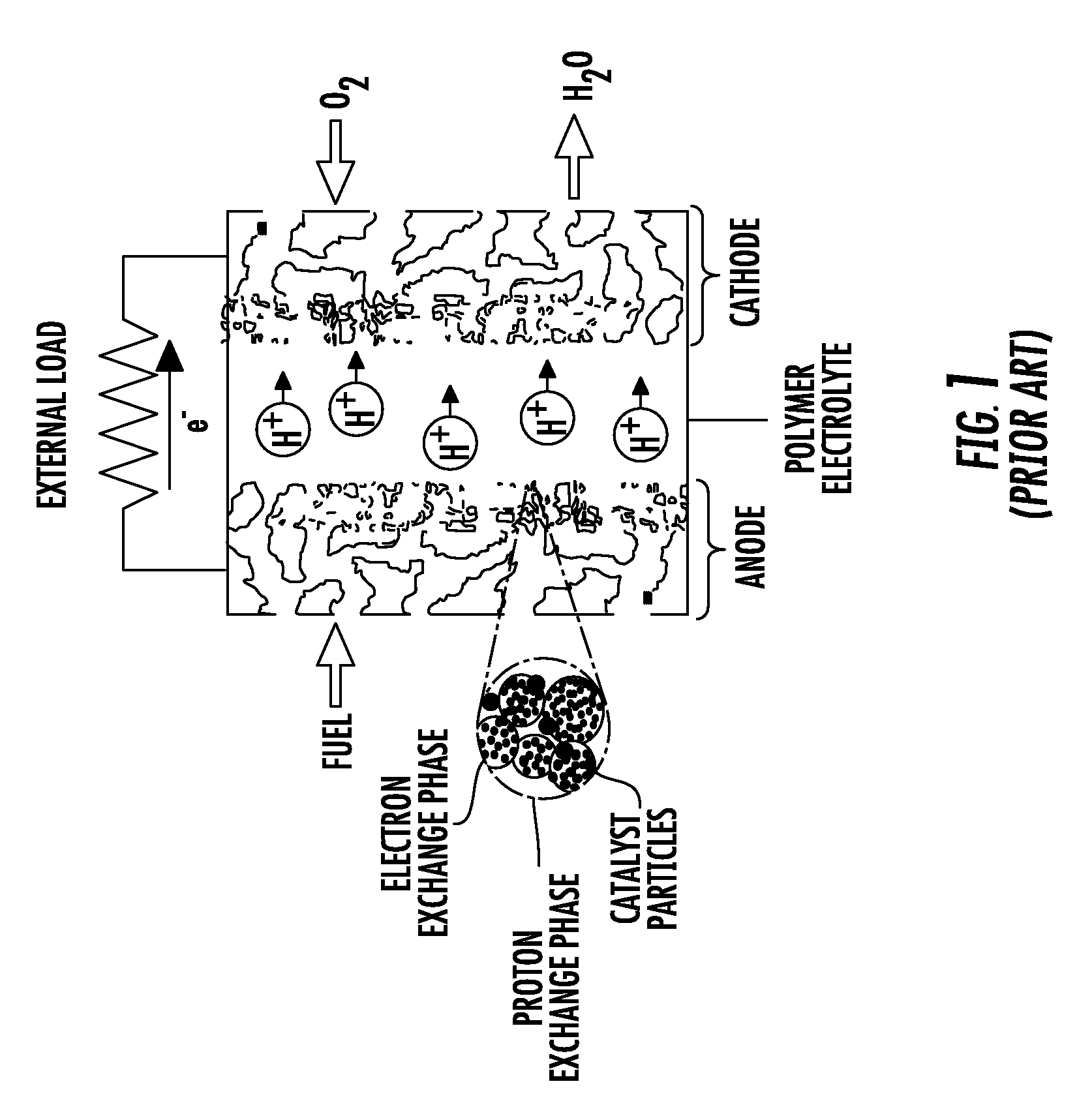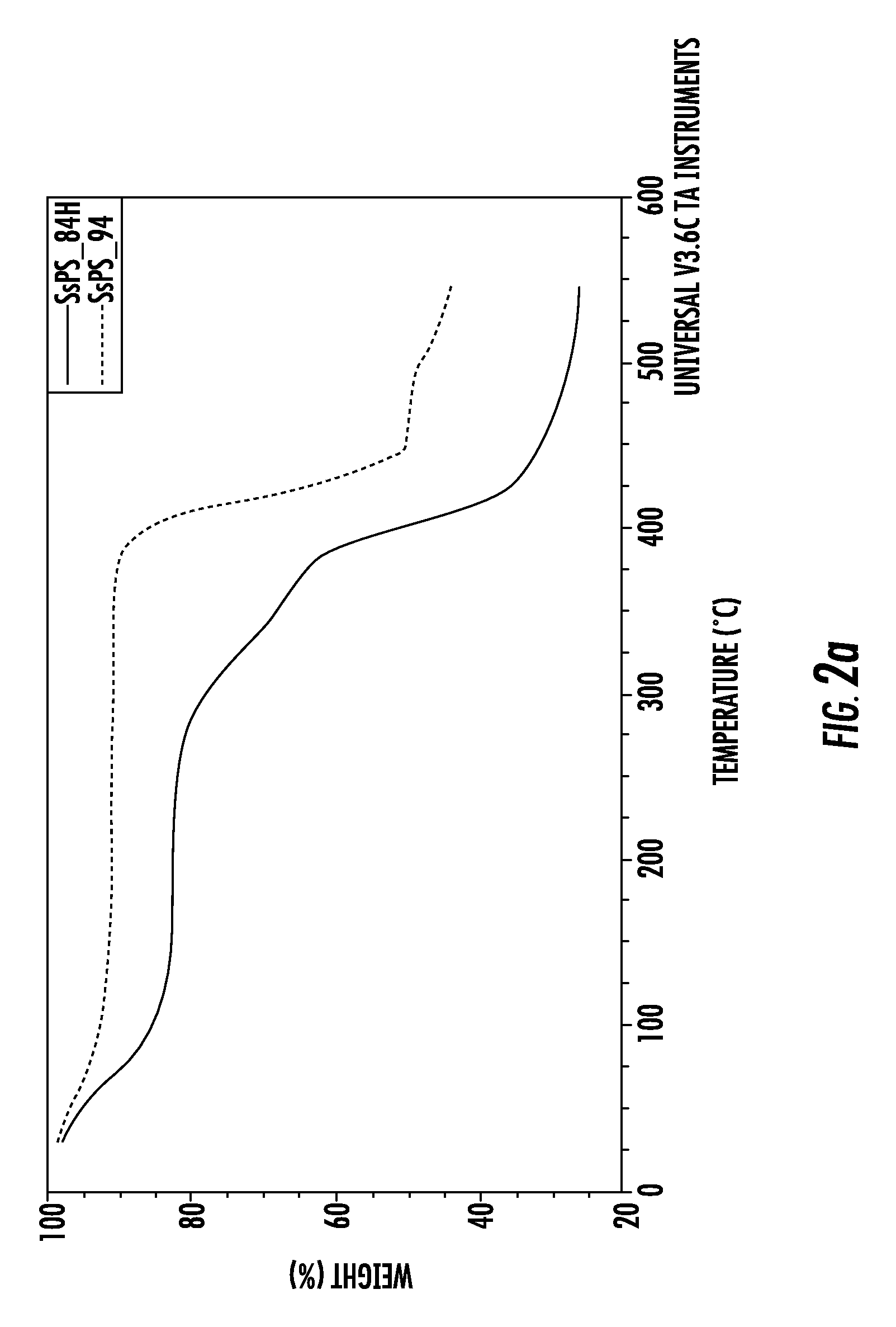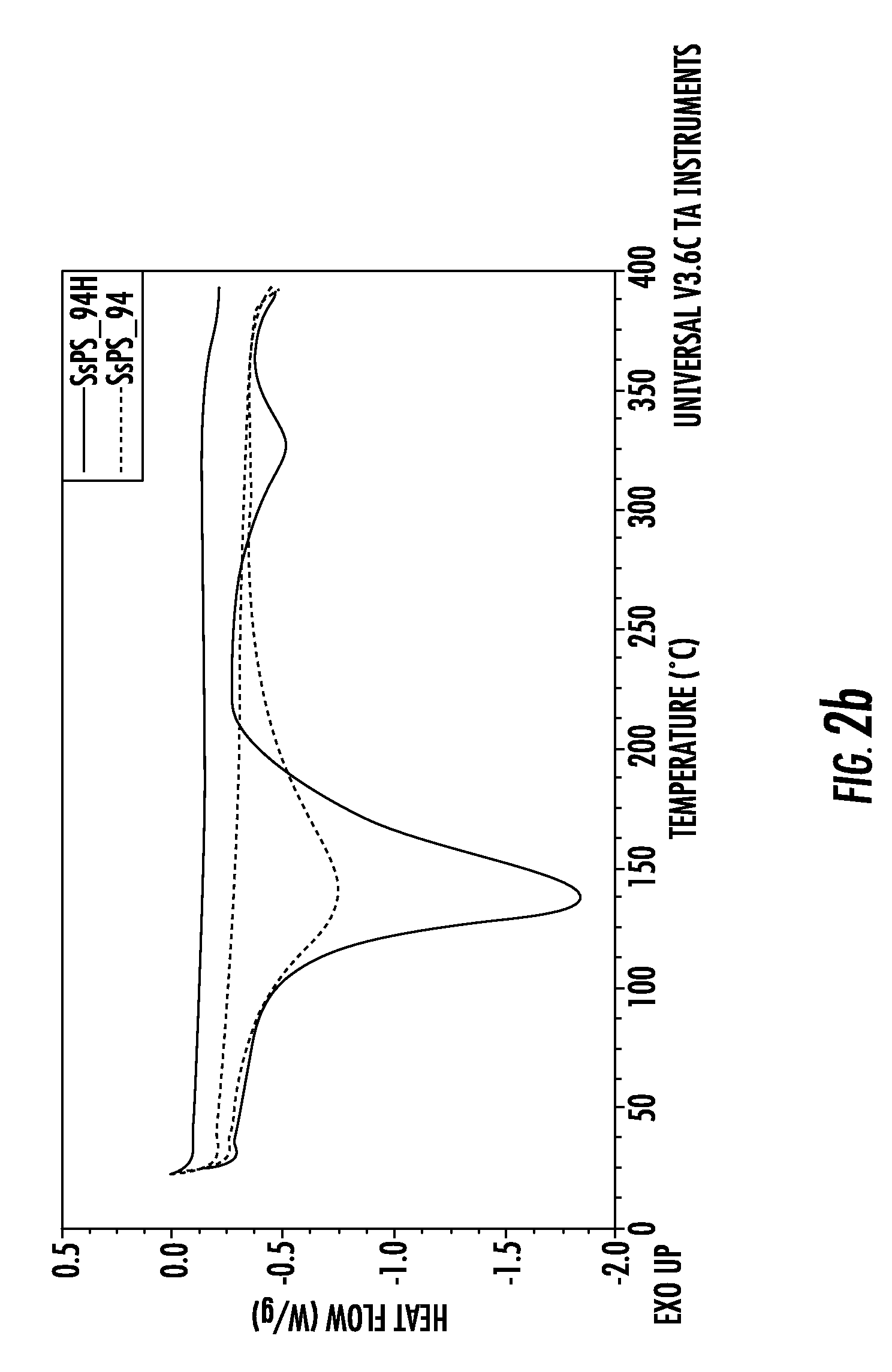Polyelectrolyte membrane for electrochemical applications, in particular for fuel cells
- Summary
- Abstract
- Description
- Claims
- Application Information
AI Technical Summary
Benefits of technology
Problems solved by technology
Method used
Image
Examples
example 1
Preparation of Polyelectrolyte Membranes Containing Syndiotactic Polystyrene in its Clathrate Form and with and without the Acidification Step
[0065]Two samples (A and B) of syndiotactic polystyrene having a weight indicated in Table 1 were individually mixed with 20 ml of chloroform (about 99.9% HPLC grade, Aldrich Chemicals) and heated to about 100° for about 1.5 hours until the polymer was completely dissolved.
[0066]In accordance with the solution-casting method, the solutions thus obtained were individually cooled to room temperature and then poured in a Petri dish until partial evaporation of the solvent was achieved, thus obtaining a film. Each film was then sulfonated, using chlorosulfonic acid, in order to introduce ionic groups into the SPS having polymorphic clathrate form. A procedure was used, which had been modified from the method for the chlorosulfonation of styrene divinylbenzene copolymers used by Rabia et al, React. Function. Polym. 28, 279 (1996).
[0067]In accordanc...
example 2
Effect of the Cation on the Diminution of the Melting Temperature
[0075]The preparation of the membranes A and B of example 1 was repeated using a sulfonation degree for both membranes of about 9.9% mol. The membranes A and B were respectively non-acidified and acidified, as in example 1.
[0076]FIG. 3 shows the effect of the cation on the lowering of the melting temperature on two 9.9% mol sulfonated membranes. It can be seen that in the case of the non-acidified membrane, not only is the melting temperature moved to lower values, but an approximately 10% reduction of the crystallinity is also detected.
example 3
Electrical Characterization of Sulfonated Membranes of Syndiotactic Polystyrene (sPS)
[0077]In the membranes of partially sulfonated syndiotactic polystyrene, the sulfonate groups are introduced into the polymer structure of the sPS by the sulfonation process described above. The proton conductivity is linked to the number of sulfonic groups inserted (degree of sulfonation), to the temperature and the hydration condition. For such reason, different proton conductivity measurement sets were carried out with the variation of the aforesaid parameters.
Preliminary Proton Conductivity Measurements
[0078]The membranes were immersed in distilled water at room temperature for about 2 hours and then, after having wiped off the water attached on the surface of the membrane, the electrical conductivity of the membrane was measured. Membrane conductivity was determined from the lateral resistance of the membrane, measured using a four-points-probe electrochemical impedance spectroscopic technique....
PUM
| Property | Measurement | Unit |
|---|---|---|
| Temperature | aaaaa | aaaaa |
| Temperature | aaaaa | aaaaa |
| Fraction | aaaaa | aaaaa |
Abstract
Description
Claims
Application Information
 Login to View More
Login to View More - R&D
- Intellectual Property
- Life Sciences
- Materials
- Tech Scout
- Unparalleled Data Quality
- Higher Quality Content
- 60% Fewer Hallucinations
Browse by: Latest US Patents, China's latest patents, Technical Efficacy Thesaurus, Application Domain, Technology Topic, Popular Technical Reports.
© 2025 PatSnap. All rights reserved.Legal|Privacy policy|Modern Slavery Act Transparency Statement|Sitemap|About US| Contact US: help@patsnap.com



